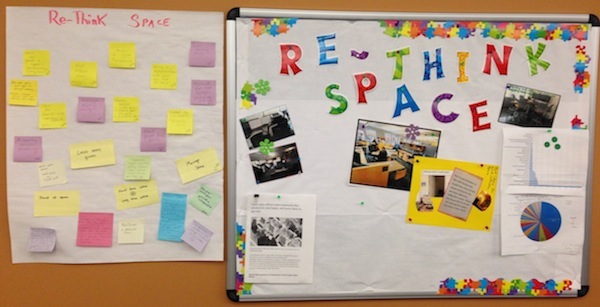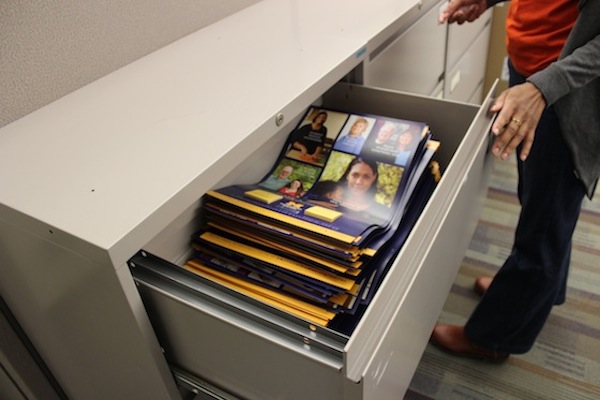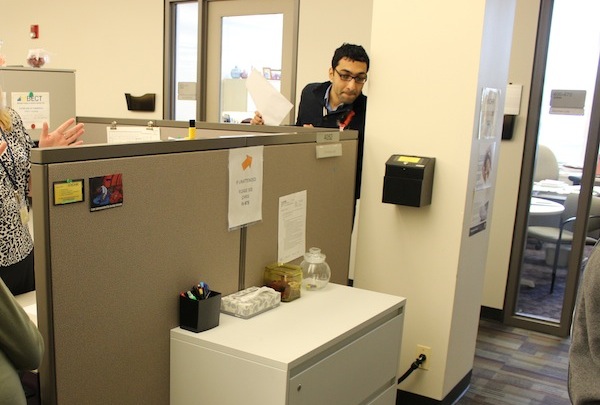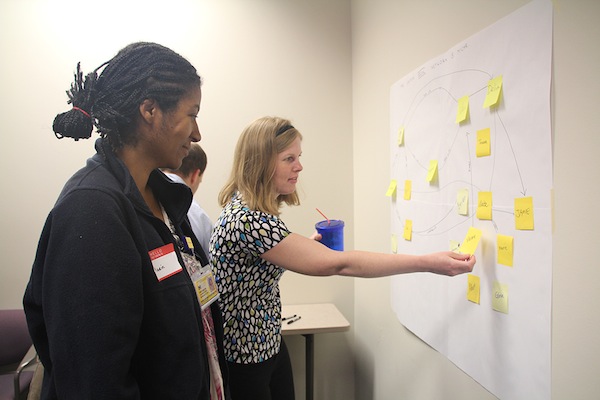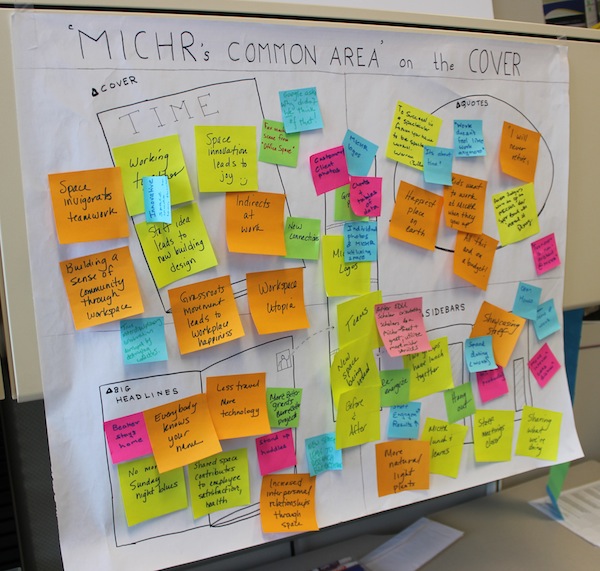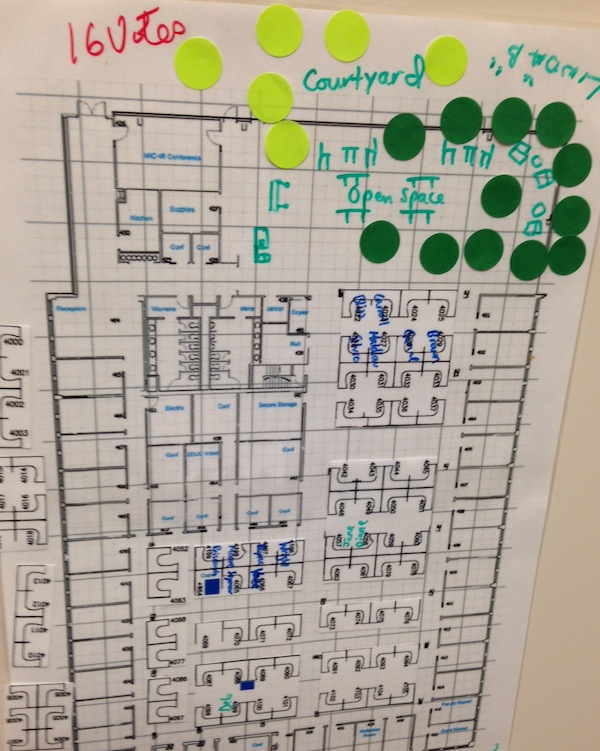Co-create workshops
We organized various workshop-style events to involve everyone working at MICHR in designing their own workspace. These events involved fun activities centered around understanding and co-creating space and culture. Not only did they help us peel the layers off the existing culture, they also brought everyone together and spread awareness about the importance of space in our work lives.
Some of the artifacts generated out of these workshops include:
Network Map
To understand how we as an organization traverse through our space, we invited the MICHR staff to co-create a network map (color coded by group) that mapped the most traversed routes within the organization. The exercise helped us become aware of our regular paths and opened our eyes to how physically trapped we were within our own groups.
Low tech social network
To map out the connections between people, we invited the staff to create a low tech social network. Each member added themselves as a node to the network and then drew connections between themselves and their peers with whom they interacted.
The low tech social network made us realize that the admins. were the most connected nodes in the system and were central to space and information flow within the organization. The network also helped us identify connections between people we would have normally not guessed.
MICHR's workspace on the cover of "Time Magazine"
To understand the aspirations of the MICHR staff in relation to their workspace, we asked them to imagine that the space was already built and was so successful that Time Magazine was doing a cover story on it. We then asked them to imagine for us what the header, sections, images, and callouts of the cover story would be.
The imaginary scenario freed the staff to think without the constraints of budgets and realistic possibilities and brought out the inner visions that staff had for their space.
Voted, weighted ideas
As a ways of achieving some convergence on the ideas we had brainstormed on, in each of the workshops we broke into smaller working groups to think through and prototype corresponding solutions. The finished artifacts were posted and voted on by the larger group. This not only helped spread the ideas but was also a consensus building exercise. We as a team then used these as inputs into our final design.
